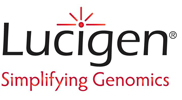
LyseGrampositiveorGramnegativebacteriaforproteinornucleicacidpurificationsfrombacteria
 HighlyActive:Thisenzymeis200Xmoreactivethaneggwhitelysozyme,thusimprovingbacteriallysisandusinglessenzyme
HighlyActive:Thisenzymeis200Xmoreactivethaneggwhitelysozyme,thusimprovingbacteriallysisandusinglessenzyme- Easy:Nosampleagitationorheatgenerationnecessaryduringlysiswhichhelpspreserveproteinfunction
- FlexIBLe:Usuagevolumesareeasilyadjustedbasedonthescaleoftheexperiment
Applications
- LysisofGram-negativeorGram-positivebacteria(Table1)forproteinpurification(Fig.1).
- Purificationofnucleicacidsfrombacteria.
Ready-Lyse™LysozymeSolutionisarecombinantlysozymepreparation,derivedfromanonmammalian,nonaviansource,thatisusefulforthelysisofGram-negative(suchasE.coli)andGram-positive(suchasBacillussp.)bacteria.ThespecificactivityofReady-LyseLysozymeis200-foldhigherthanthespecificactivityofegg-whitelysozymeand,therefore,lesslysozymeisneededinareaction.Also,unlikeegg-whitelysozyme,Ready-LyseLysozymeSolutionisstableat-20°C,eliminatingtheneedtoprepareafreshsolutionforeachuse.TheuseofReady-LyseLysozymeresultsinhigheryieldsofproteinthancanbeobtainedwithstandardeggwhitelysozyme.
UnitDefinition:OneunitofReady-LyseLysozymeproducesadecreaseinA350of0.001perminuteat23°Cwitha0.5mg/mlsUSPensionoflyophilizedE.coliK802cellsin50mMTris-HCl(pH7.5).
StorageBuffer:50%glycerolcontaining50mMTris-HCl(pH7.5),0.1MNaCl,0.1mMEDTA,1mMDTT,and0.1%Triton®X-100.
Table1.BacterialysedwithReady-Lyse™LysozymeSolution. |
 | Figure1.LysiswithReady-Lyse™Lysozymeincreasesyieldsofnucleicacids.500µgpermlofpHC79cosmidDNAwasincubatedfor15minutesat22°CinTEbuffer(25mMTris(pH8.0),10mMEDTA)containingeither5µg(30KU)permlofReady-LyseLysozymeor500µg(25KU)permlofeggwhitelysozyme.Thesolutionswerecentrifugedfor10minutesandthepelletswereresuspendedinTEbuffercontaining0.1%SDS.DNAinsupernatantsandpelletswasseparatedbyelectrophoresisina0.8%agarosegel.Approximately50%oftheDNAwaslostduetoprecipitationbyeggwhitelysozyme(EW),whileReady-LyseLysozyme(RL)causedminimalprecipitationlossesofDNAcomparedtocontrol(C)sampleswithoutlysozyme. |  | Figure2.UseofReady-Lyse™LysozymeSolutiontorecoverrecombinantproteins.OnemlofinducedcellsfromarecombinantE.coliclonewaspelletedbymicrocentrifugationbeforeinductionandat1and3hoursafterinduction.Eachsamplewasresuspendedin50µlofcoldTEBGbuffer.OneµlofReady-LyseSolutionwasaddedtoeachsuspensionandthecellswereincubatedatroomtemperaturefor30minutes.Thecelldebriswaspelletedand10µlofthesupernatantwererunonanSDS-PAGEgel.Lane1,molecularweightMarkers;Lanes2-4,timepointsofinduction.Theinducedproteinisdesignatedbyanarrow. |
ebiomall.com






>
>
>
>
>
>
>
>
>
>
>
>
1、根据所需求的酸碱性选择合适的缓冲对,若是配制酸性缓冲液就选择弱酸与弱酸盐缓冲对;若是配制碱性缓冲液就选择弱碱与弱碱盐缓冲对。
2、根据所需要控制的PH范围以及弱酸和弱碱的解离常数(pKa/pKb)选择具体的共轭酸碱对,公式为PH=pKa±1=(14-pKb)±1。
3、根据公式计算缓冲溶液的组分比,酸性缓冲液PH=pKa-lgc酸/c盐,碱性缓冲液PH=14-pKb+lgc碱/c盐。
4、根据共轭酸碱对以及其组分比配制缓冲液,方法同普通溶液。
举例:试配制一种缓冲液,体积为1L,PH能维持在10.25左右。
a、依题意选择弱碱与弱碱盐的共轭对;
b、由PH=(14-pKb)±1,算出pKb在3.75与4.75之间,查弱碱的解离常数表可知氨水(pKb=4.75)符合要求,故可选择NH3-NH4Cl体系;
c、由PH=14-pKb+lgc碱/c盐,算出c(氨水)/c(氯化铵)=10;
d、设氨水的浓度为10mol/L,则氯化铵的浓度为1mol/L,所以在浓度为10mol/L体积为1L的氨水中加入1mol的氯化铵即可。
酶提取技术,属地球化学勘查学科。其是由克拉克(J.R.Clark)等人于20世纪80年代末和90年代初研制出的一种利用葡萄糖氧化酶提取矿物颗粒表面的非晶质锰的氧化膜寻找隐伏矿的方法。1995年以后已广泛应用。
根据组成不同,可分为两种,弱酸及其对应的强碱弱酸盐,弱碱及其对应的强酸弱碱盐。
因为HF可以和NaOH反应生成NaF和水,当NaOH反应完之后,NaF就可以与HF组成缓冲溶液,所以说可以直接使用NaOH和HF来配制缓冲溶液。
这也是一般配制缓冲溶液的方法,也就是用强碱和弱酸(或者强酸和弱碱)来配制缓冲溶液。









